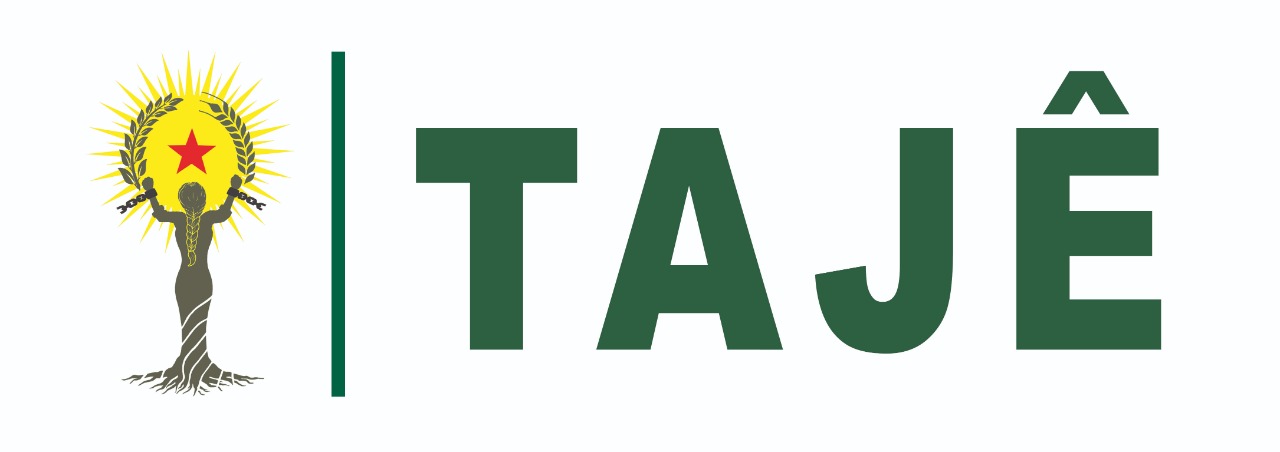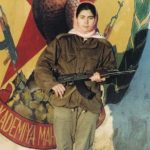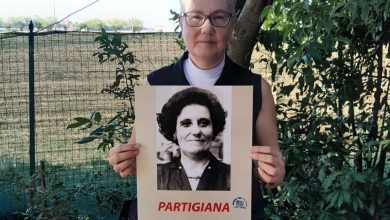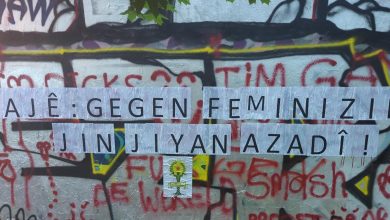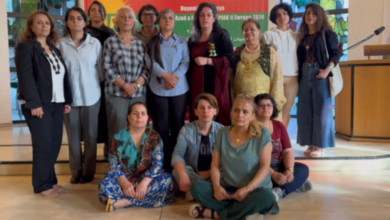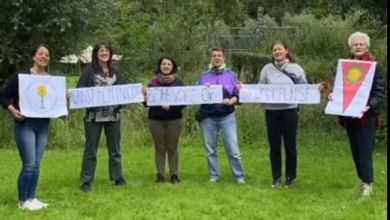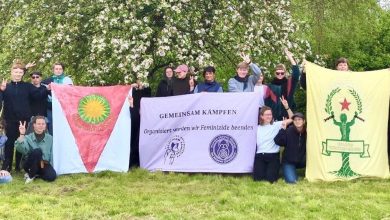Our Şehîds are our light and hope: Resisting Êzidî Women
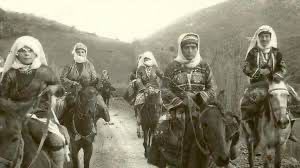
(((Find translation below)))
In spring, the nature of Şengal blooms in all colors. Especially in the mountains of Şengal the most beautiful flowers grow. We want to make use of this time to remember women, who resisted against the patriarchal system. As part of our campaign “Against Femicide – be the voice of self-defense!” we therefore invite all women to organize commemorations in all the places you are.
For this, we want to introduce you some of many more resisting Êzidî women, who played an important role for our community.
We are happy if you upload pictures and videos of your commemorations on social media with #AgainstFemicide and #DengeXweparastin. You can also send us them via e-mail to [email protected].
Resisting Êzidî women:
1. Xatûna Ferxan
Xatûna Fexran was an Êzidî woman who lived in the 13th century. During the times of Sheikh Hadî she was part of the „Meclîsa Runahî“ (in English „Council of light“, an important institution of the Êzidî community). Xatûna Fexran lived in Şengal. Her knowledge and patience made her an pioneer for the society. She was especially seen as a protector for women and children as she was able to cure them with her hands. Today there is a see between the cities of Heseke in Western Kurdistan (Rojava) and Şengal carrying the name of Xatûna Fexran, Furthermore you can find her temple in the mountains of Şengal. As her real name was Xezal (meaning deers), there is a statue and picture of a deers next to the temple.
2. Bêrîvan Cizîrî
Bêrîvan Cizîrî was a resisting, young Êzidî woman. She led the resistance against the violence and attacks of the Turkish state against the society in Cizîra Botan. She worked hard for a societal self-defense and made the society to stand up for their rights. Bêrîvan Cizîrî was killed by the Turkish state in Cizîra Botan in 1989. Her funeral turned into a huge resistance of the people in Cizîre. Until today, Bêrîvan Cizîrî plays an important role for the people and women in the Botan region.
3. Cîlan
Cîlan was a learned and clever woman with a doctorate. When she was kidnapped by the so-called „Islamic State“ (Daesh) during the genocide 2014, they wanted her to be married to fighter of Daesh. They told her: „Go and wash yourself. We want to marry you with one of our emirs.“ However, Cîlan did not accept this dishonoring. She slit her wrists and killed herself.
4. Dayê Gulê
During the genocide in Şengal 2014, the first bullet against the so-called „Islamic State“ (Daesh) was shot in the district of Sinune. When Daesh approached closer to the house auf Dayê Gulê to kidnap her and her children, she took the weapon of her husband. When a Daesh-fighter entered her house, Dayê Gulê shot his head and killed him. Thereupon, she was also killed. Today, a statue of Dayê Gulê in Sinune reminds of her courage.
5. Berîvan Şengalî
Berîvan Şengalî was a young, Êzidî woman from Şengal. She was born into a patriotic family and was the daughter of Şehîd Seid Hesen, a commander of the Şengal Resistance Units, YBŞ. After witnessing the genocide against the Êzidî people 2014 in Şengal, she decided to join the guerrilla to take revenge for the attacks against her society. In 2015, she was killed by the Turkish state in the mountains of Kurdistan.
6. The 19 women who were burned in Mosul
A story, which serves as a symbol for the inhuman brutality of the so-called „Islamic State“ (Daesh), is the burning of 19 Êzidî women in Mosul. Mosul played an important role for Daesh, as it was the place where they proclaimed their „caliphate“ in 2014. It was also a place, to which many kidnapped Êzidi women were brought and sold. In June 2016, 19 of them were locked up in cages and burned alive. They resisted against the violence and brutality of Daesh and refused to convert to Muslim faith. Be it during witch hunt in Europe or in 2014 in Mosul, the violence against resisting women is as long as their struggle.
_________________________________German______________________________________
Widerständige êzidische Frauen
1. Xatûna Ferxan
Xatûna Fexran war eine Êzidin, die im 13. Jahrhundert lebte. In der Zeit Sheikh Hadîs war sie als Frau Teil des „Meclîsa Runahî“ (auf deutsch: „Rat des Lichts“, ein zentrales Gremium der êzidischen Gemeinschaft). Xatûna Fexran wirkte in Şengal und war mit ihrem Wissen und ihrer Geduld eine wichtige Vorreitern für die dortige Gesellschaft. Sie wurde vor allem als Beschützerin der Frauen und Kinder gesehen, da sie in der Lage war kranke Frauen und Kinder mit ihren Händen zu heilen. Zwischen den Städten Heseke in Westkurdistan (Rojava) und Şengal gibt es heute einen See, der den Namen Xatûna Fexran trägt. Außerdem gibt es in den Bergen Şengals einen ihr gewidmeten Tempel. Da der echte Name Xatûna Fexrans Xezal (auf deutsch: Reh) war, stehen neben dem Tempel eine Statue und Bilder eines Rehs.
2. Bêrîvan Cizîrî
Bêrîvan Cizîrî war eine widerstände, junge êzidische Frau. Sie führte den Widerstand in Cizîra Botan in Nordkurdistan gegen die Gewalt und Angriffe des türkischen Staates auf die dortige Bevölkerung an. Sie arbeitete hart für eine gesellschaftliche Selbstverteidigung gegen diese Angriffe und weckte damit das Volk auf. 1989 wurde Bêrîvan Cizîrî in Cizîra Botan durch den türkischen Staat ermordet. Ihre Beerdigung wurde zu einem riesigen Protest des Volks in Cizîre. Bis heute spielt sie eine wichtige Rolle für das Volk und die Frauen der Region Botans.
3. Cîlan
Cîlan war eine gelehrte und kluge Frau mit einem Doktorabschluss. Als sie während des Genozids an den Êzid:innen 2014 durch den sogenannten „Islamischen Staat“ (IS) gefangen genommen wurde, sollte sie mit einem Kämpfer des IS verheiratet werden. Ihr wurde gesagt: „Geh und wasche dich, wir geben dich einem Emir vom IS!“ Doch Cîlan akzeptierte diese Schande nicht. Sie schnitt sich die Pulsadern auf und starb.
4. Dayê Gulê
Während des Genozids an den Êzid:innen in Şengal am 3. August 2014 fiel der erste Schuss gegen den IS im Bezirk Sinune. Als der IS dem Haus der Familie von Dayê Gulê näher kam, um sie und ihre Kinder gefangen zu nehmen, nahm sie die Waffe ihres Ehemanns. Als sich schließlich ein Kämpfer des IS das Haus betrat, schoss Dayê Gulê ihm mit einer Waffe in den Kopf. Daraufhin töten sie auch Dayê Gulê. Heute steht in Sinune ein Denkmal, das an sie und ihren Mut erinnert.
5. Berîvan Şengalî
Berîvan Şengalî war eine junge êzidische Frau aus Şengal. Sie kam aus einer kämpferischen Familie und war die Tochter von Şehîd Seid Hesen, ein Kommandant der Widerstandseinheiten Şengals YBŞ. Um Rache für den Genozid in Şengal zu nehmen schloss sich Berîvan Şengalî 2014 der Guerilla an. 2015 wurde sie in Bergen Kurdistans durch den türkischen Staat ermordet.
6. Die neunzehn verbrannte Frauen in Mosul
Eine Geschichte, die als Symbol für die Brutalität des sogenannten „Islamischen Staats“ steht, ist die Verbrennung von 19 êzidischen Frauen in Mosul. Mosul spielte eine wichtige Rolle für den IS, denn hier wurde 2014 offiziell ihr „Kalifat“ ausgerufen. Es war auch ein Ort, an den viele verschleppte, êzidische Frauen gebracht und weiterverkauft wurden. Im Juni 2016 wurden neunzehn von ihnen in Käfige gesperrt und bei lebendigem Leib verbrannt. Es waren Frauen, die gegen die Gewalt und Unterdrückung des IS Widerstand leisteten und sich weigerten zum Islam zu konvertieren. Sei es während der Hexenverfolgung in Europa oder 2014 in Mosul, die brutale Gewalt gegen widerstände Frauen zieht sich genauso durch die Geschichte, wie ihr Kampf.
